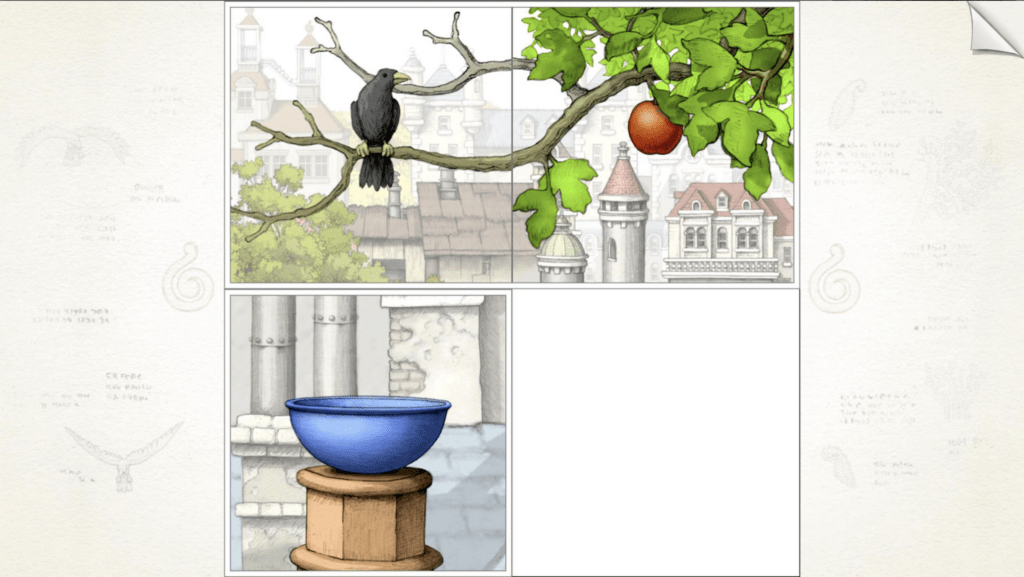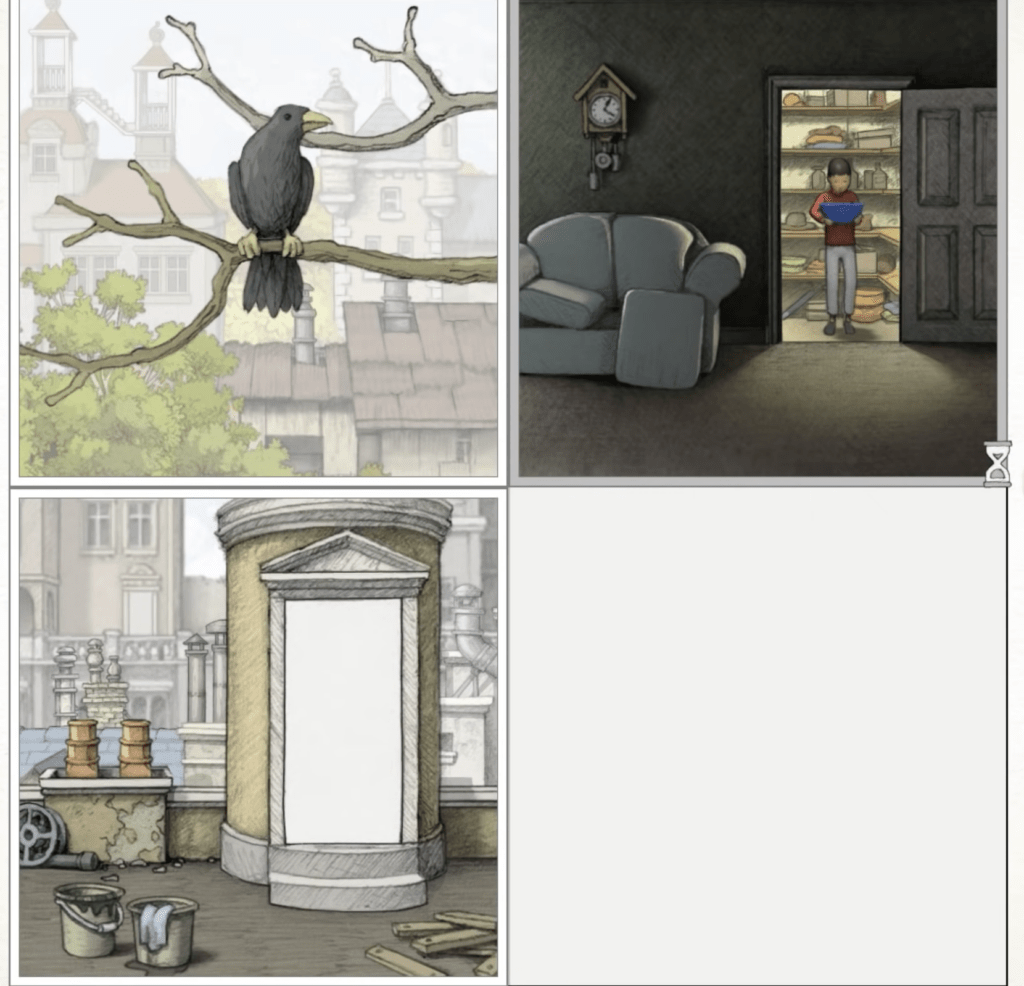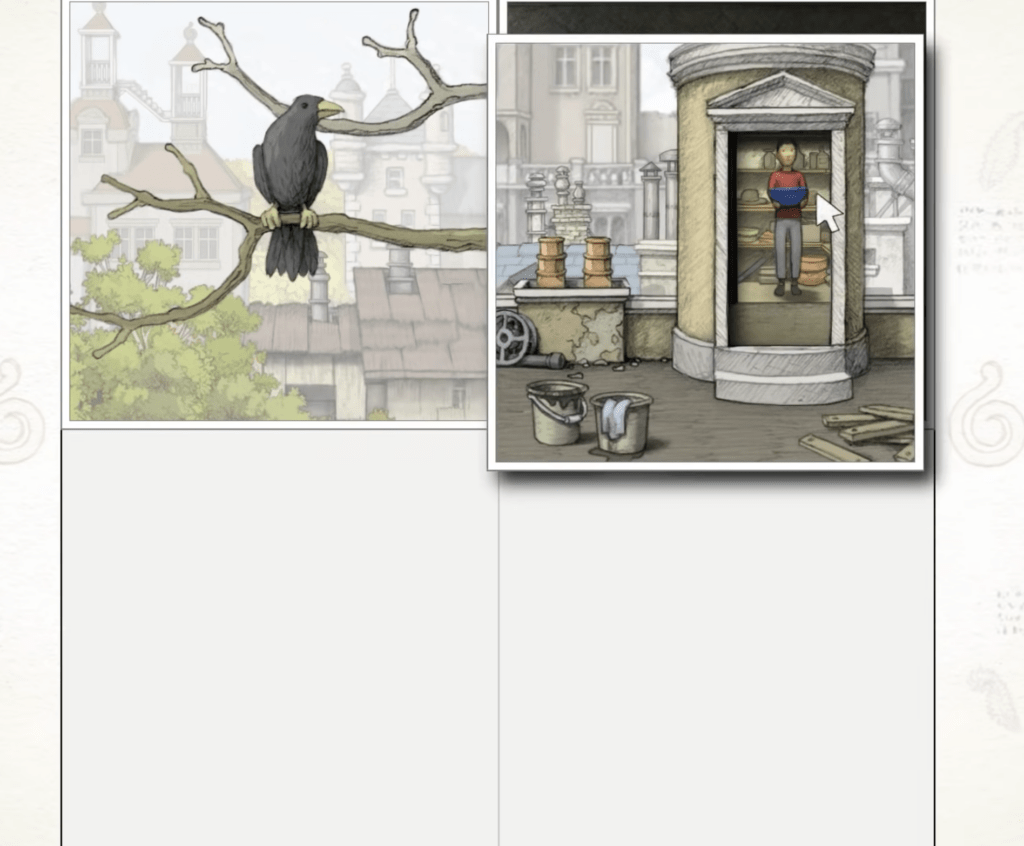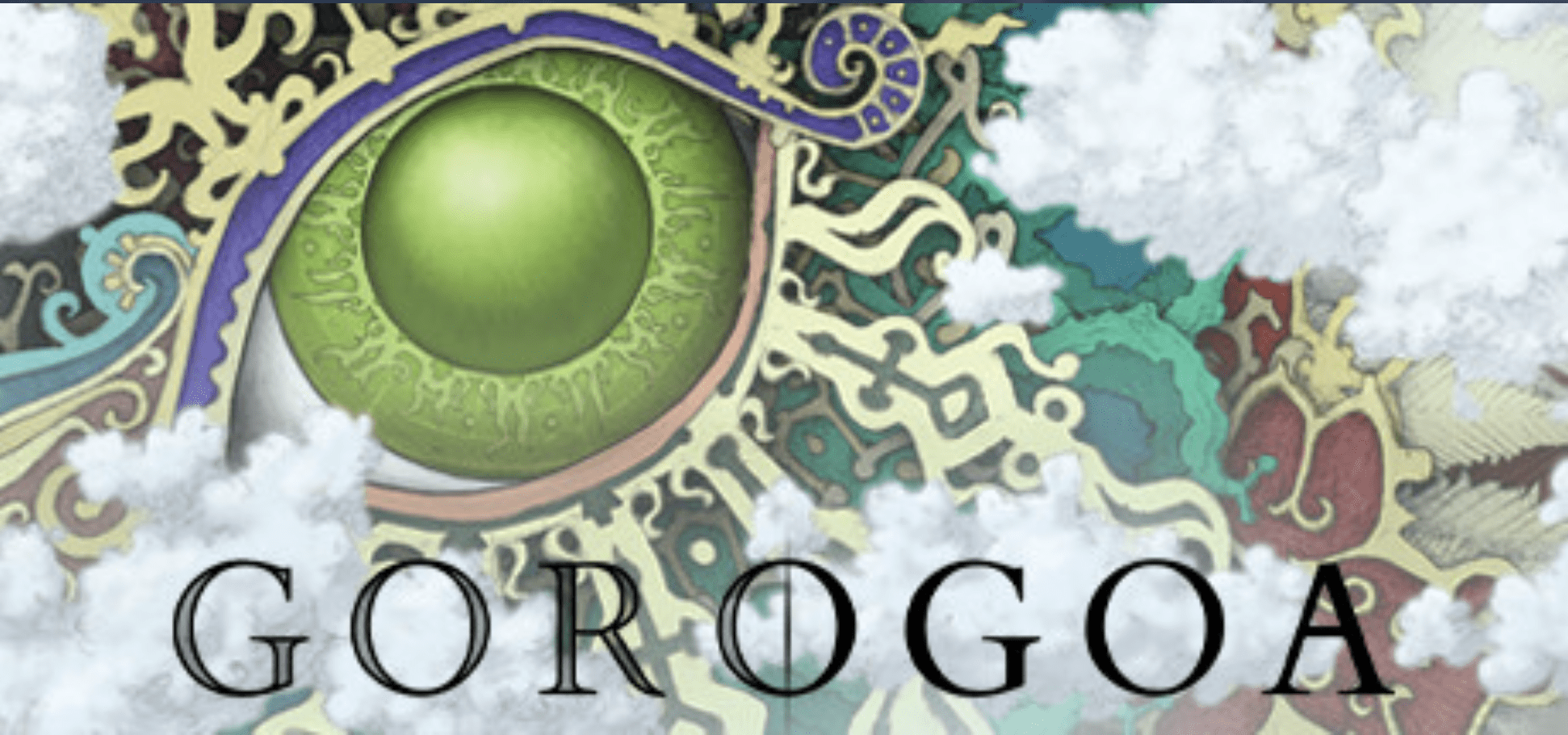Overview
I played Gorogoa, a very beautiful puzzle game developed by Jason Roberts and published by Annapurna Interactive. It is available on multiple platforms, including Windows, Mac, iOS, Steam, Xbox, Station, and Nintendo Switch. The iOS store states that the recommended age range for players is 4+. However, I think even though the game does not contain any text, which makes it friendly for young players, the ideal age is 10+ because the game requires some spatial thinking and creative approaches in order to solve all the puzzles. To successfully solve the puzzles, one needs to understand the relationships between the different pieces and look for patterns.
Important Formal Elements
Player: player vs. game
Objective: solve puzzles to complete the storyline
Resources: moveable squares and hints
Rules: move the squares to their correct locations, but players can have unlimited moves. In other words, they can keep trying and experimenting till they reach the right answer.
Players & Mechanics
Considering the puzzle design and mechanics of the game, I think Gorogoa is most suitable for people who enjoy following a storyline, exploring the story, doing light puzzles, and solving problems creatively. The game can also be fun and refreshing for people who love jigsaws and wants to try out a jigsaw-style narrative game.
The basic mechanism of this game is simple: players have 3 or 4 squares to move inside a 2×2 frame. Each square has a picture on it, and the players need to move the squares around to enable the storyline to move forward. For example, in the picture below, players need to move the top two pieces together in the order shown in the picture, and then move the lower left bowl to the empty space underneath the apple so that the apple can fall into the bowl.

Mechanics & Types of Fun
I listened to Jason Robert’s GDC talk on Gorogoa, and he brought up the tension between Discovery and Challenge in this game. Discovery and Challenge are the two main types of fun in this game, and they depend on the game mechanism, which is moving around the squares. Players discover the storyline of the game by moving the squares or overlaying the squares in the correct location. Players engage with challenges during the process of moving around the squares and solving puzzles. According to Roberts, Gorogoa strives to “escape from predictable mechanic patterns”, and I think Gorogoa did a wonderful job designing the puzzles creatively and also not making it too difficult so players are able to stay in their flow state. In the part I played with, I noticed that there are two main types of puzzle patterns: 1. Alignment and 2. Overlay.
First, the alignment allows objects in different squares to connect and piece together into one larger frame. The earlier example of the crow and the apple tree is an example. To me, the fact that the squares align and connect with each other perfectly also gives me aesthetic pleasure.
Second, some squares have a transparent part and can be put on top of another square. For example, the two pictures below showcase how the protagonist can be transported to another place. In this case, players move around the lower left square and layer it on top of the upper right square. Essentially, with this overlay pattern, players are helping the protagonist to move between places and move the storyline forward with the arrangement of the squares.
 ->
->
Suggestion for Improvement
I like how Gorogoa uses different symbols to tell players what they should do at different phases. For example, the cursor turns into an hourglass symbol to indicate that a storyline is about to play. The cursor turns into a moving symbol to indicate that it is time for players to move around the squares. However, while I was playing the game, I found it a little frustrating that I need to keep clicking on different places to test which locations are “clickable”. While Gorogoa offers hints by showing where players can click on them, the hints appear very late during the process. I think it would be nice if Gorogoa offers some audio feedback on if I am clicking near the right “clickable” locations or even visual feedback on the overall clickable area so I can narrow down my focus.




